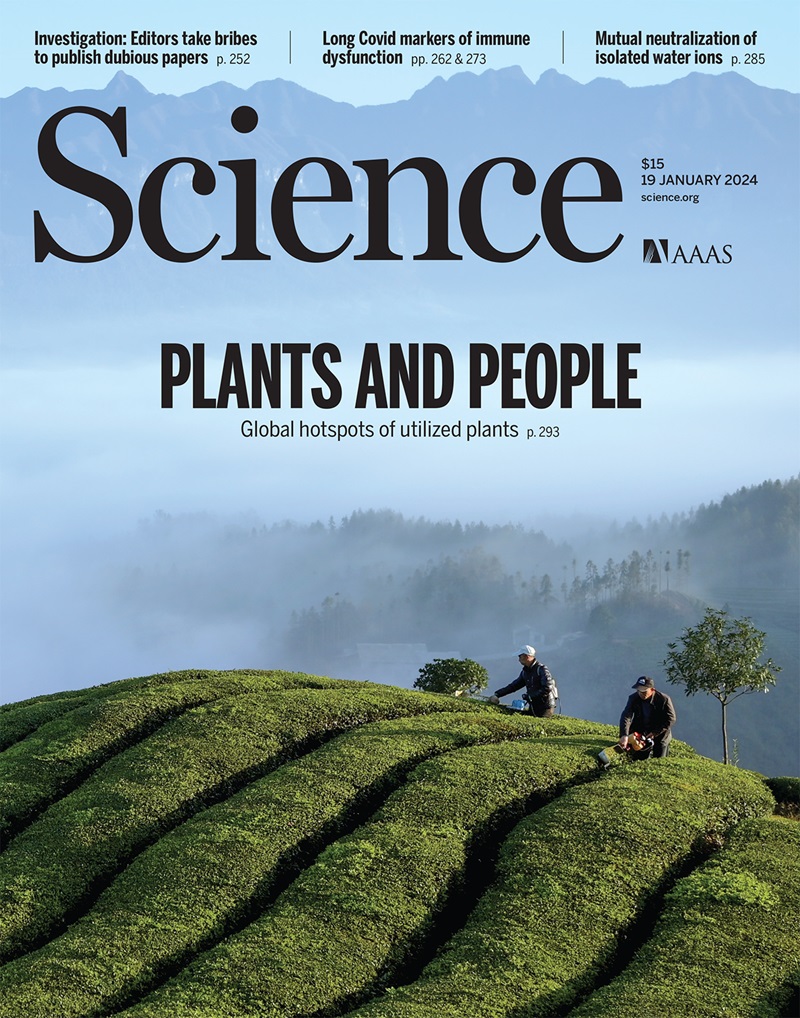Editing proteins inside a cell
IF 44.7
1区 综合性期刊
Q1 MULTIDISCIPLINARY SCIENCES
Science
Pub Date : 2025-05-01
引用次数: 0
Abstract
Programmable gene editing technologies, such as CRISPR, have increased the capacity to study gene functions and to model diseases. These tools can precisely manipulate DNA and RNA at the nucleotide level in both cellular and whole-animal contexts (1, 2). Proteins constitute another primary class of biomacromolecules that forms the basis of genetic information flow and determines the observable traits of an organism. However, no comparable technique is available for directly editing proteins within a cell. On page 487 of this issue, Beyer et al. (3) report that a pair of split inteins—small protein segments that can undergo a self-sustained protein splicing reaction—enables endogenous protein editing in living mammalian cells. Recently, Hua et al. (4) also reported the manipulation of folded proteins using the split intein–mediated method. Such direct protein editing creates possibilities for introducing previously unachievable protein functions and their spatiotemporal controls at the cellular level.
编辑细胞内的蛋白质
可编程基因编辑技术,如CRISPR,提高了研究基因功能和建立疾病模型的能力。这些工具可以在细胞和全动物环境中精确地在核苷酸水平上操纵DNA和RNA(1,2)。蛋白质构成了另一类主要的生物大分子,构成了遗传信息流的基础,并决定了生物体的可观察特征。然而,目前还没有类似的技术可以直接编辑细胞内的蛋白质。在本期的第487页上,Beyer等人(3)报道了一对分裂的内链(可以进行自我维持的蛋白质剪接反应的小蛋白质片段)可以在活的哺乳动物细胞中进行内源性蛋白质编辑。最近,Hua等人(4)也报道了使用分裂间质介导的方法对折叠蛋白的操作。这种直接的蛋白质编辑为在细胞水平上引入以前无法实现的蛋白质功能及其时空控制创造了可能性。
本文章由计算机程序翻译,如有差异,请以英文原文为准。
求助全文
约1分钟内获得全文
求助全文
来源期刊

Science
综合性期刊-综合性期刊
CiteScore
61.10
自引率
0.90%
发文量
0
审稿时长
2.1 months
期刊介绍:
Science is a leading outlet for scientific news, commentary, and cutting-edge research. Through its print and online incarnations, Science reaches an estimated worldwide readership of more than one million. Science’s authorship is global too, and its articles consistently rank among the world's most cited research.
Science serves as a forum for discussion of important issues related to the advancement of science by publishing material on which a consensus has been reached as well as including the presentation of minority or conflicting points of view. Accordingly, all articles published in Science—including editorials, news and comment, and book reviews—are signed and reflect the individual views of the authors and not official points of view adopted by AAAS or the institutions with which the authors are affiliated.
Science seeks to publish those papers that are most influential in their fields or across fields and that will significantly advance scientific understanding. Selected papers should present novel and broadly important data, syntheses, or concepts. They should merit recognition by the wider scientific community and general public provided by publication in Science, beyond that provided by specialty journals. Science welcomes submissions from all fields of science and from any source. The editors are committed to the prompt evaluation and publication of submitted papers while upholding high standards that support reproducibility of published research. Science is published weekly; selected papers are published online ahead of print.
 求助内容:
求助内容: 应助结果提醒方式:
应助结果提醒方式:


